The sixth edition of MAD, in Copenhagen, ended on Monday. The two-day symposium was conceived by a no-profit organisation created in 2011 by Rene Redzepi, chef at Noma. Beside him, there’s Melina Shannon-Dipietro, Italian-American executive director of an event that aims to create a global network of people who work to improve the food industry. As explained in the headline of the movement, they’re urged by a «social conscience, a sense of curiosity, and an appetite for change». Together, they «envision a better, healthier, more sustainable, more delicious world for cooks and eaters alike».
MAD is currently the most enlightened event on the global radar. We tried to understand why with a list of reasons.
- Having always worked without sponsors, MAD is supported thanks to private donations and the tickets paid by participants to each edition: 3,500 Danish krones (around 470 euros). This year there were 600 participants from 58 nations, selected among thousands of applications. The limited number of participants allows to focus on content, with few distractions.
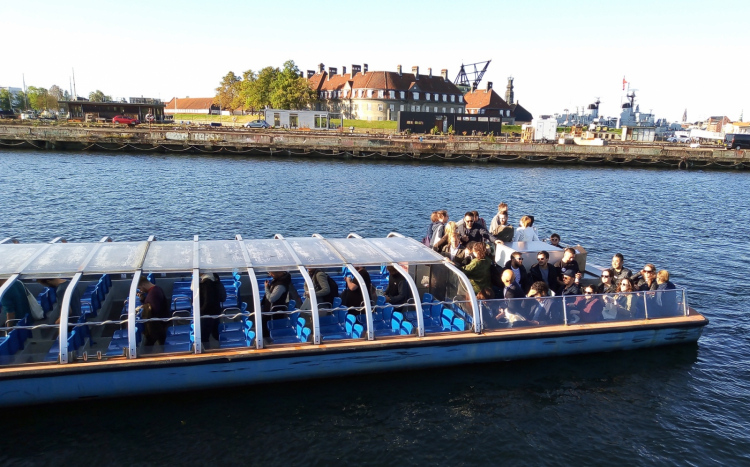
The boat that took you, in 10 minutes, to MAD’s location
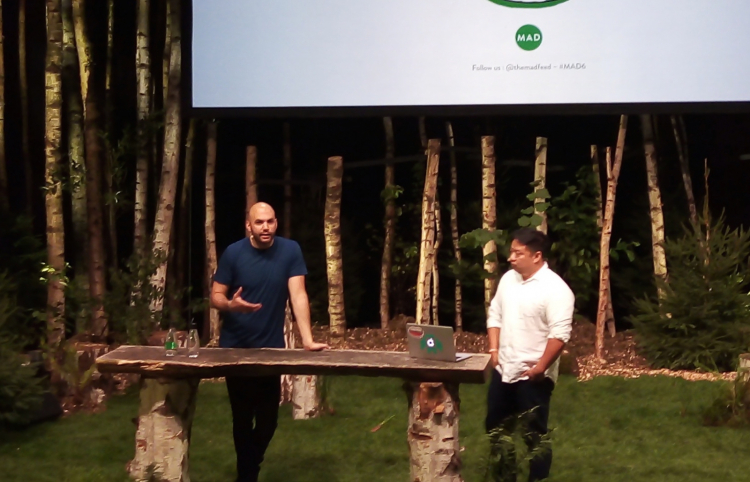
To the left, Dan Giusti, ex sous chef at Noma: his mission is making food for schools
- The event is supported by 60 volunteers from 20 countries, many of whom are part of
Noma’s staff, which is traditionally closed during the two days of the symposium (on Sunday and Monday). The hospitality is as attentive as the one given at the restaurant. At the entrance, there’s
Redzepi in person welcoming everyone. Trivia fact: the Macedonian/Danish chef will almost never appear under the spotlight, during the event. In other words: it’s a place for ideas, not ego, something rare and highly appreciated.
- Overall, the atmosphere is always civilised, friendly, “socialist” some said as a joke – almost. The staff encourages people who have never met before (in most cases) to overcome any diffidence. From the moment you get on board to the staff onsite, they’re always asking: how’s it going? do you need anything? let me know if I can help you. This attentiveness is infective, so much so participants spontaneously start to exchange ideas and impressions with the person sitting next to them.
- The symposium takes place in three places: a red circus tent, where the 17 keynotes and conversationsof the two-day event take place, and a white tent next to it, the “restaurant” where in waves you have breakfast, lunch, and coffee break in mid-afternoon. All around, there are other small tents seating 30 people, where the 11 am breakout sessions take place on both days.
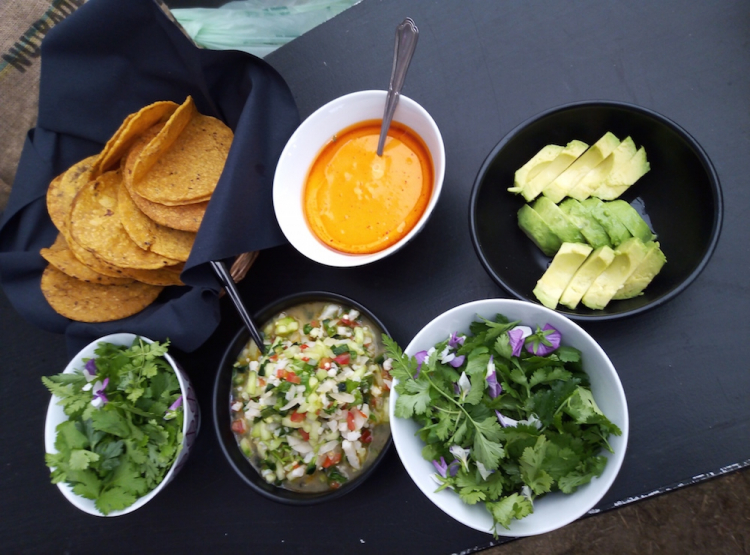
Fish taco for lunch, by Rocio Sanchez
- The samples offered under the white tent are heterodox and high quality: the thai breakfast with noodles khao dtom sen or khao yum brings back joyful memories («never had such a spicy breakfast», complained some of the westerners), paired with the incredible sourdough bread by Richard Hart, who’s opening a bakery in Copenhagen in the autumn. And the set of fish tacos by Rosio Sanchez, ex pastry chef at Noma now at the helm of a taqueria (Hija de Sanchez) and a more ambitious restaurant in town (Sanchez). All this while pouring the emblems of the Copenhagen Renaissance: a superb selection of filtered coffee (The Coffee Collective, Koppi…) and craft beers, as well as rare teas, rose kombucha, cider and water, available for free refills in the now famous Madbranded glass bottles.
- Of course, it’s the content and the speakers who set the overall standards of the event. During the two days, chefs, professors, philosophers, psychologists, orchestra directors, surgeons, motivational coaches, journalists, singers, visual artists, Hollywood producers, meditation teachers, food managers and mostly US and Danish journalist (which reflects the origins of the two curators of MAD) spoke in turn. There was only one real cooking class, offered by Jay Fai, the 72-year-old queen of street-food in Bangkok («The secret of my crab omelette? Using more crab than eggs»). This confirms a message that is increasingly clear and strong in our world: «A cuisine is much more than the sum of its recipes», to put it in the words of Massimo Bottura, a chef who has been following the same thread of social and civil responsibility for quite some time. Or: «If you have such a big megaphone», shouted at Mad philosopher Vincent Hendricks, «you should offer much more than a food experience.
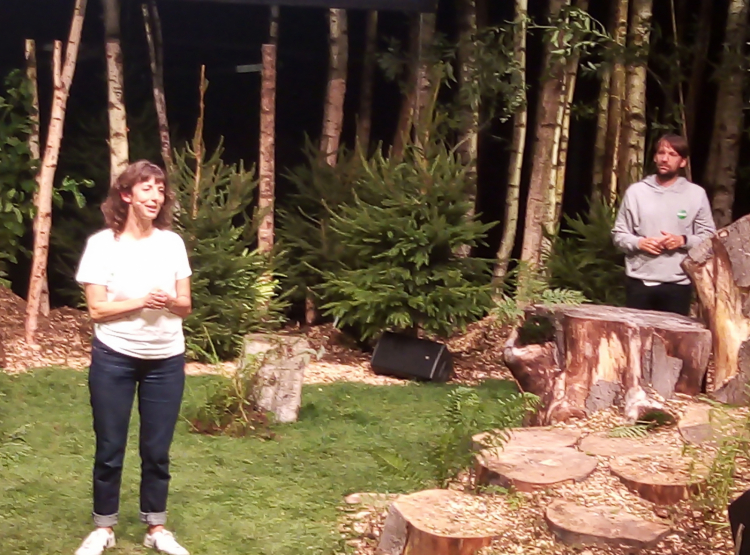
THE CURATORS. Melina Shannon-Dipietro and, behind, Rene Redzepi
- With their very different expertise, all the speakers at MAD followed a common thread, “Mind the gap”, that is to say «shorten the distance between the current restaurant world and the one we aspire to», giving models that can possibly reach beyond the walls of a restaurant, «building bridges, not walls, so as to state clearly our desire to live in a better world, at a time when even just having an opinion may scare you». This fear is something even the very civilised Nordic countries experience, given that on the 9th September in Sweden the Sverigedemokraterna, a xenophobe party, might get plenty of votes at the general elections.
- Yet the focus was within the restaurant’s walls. Almost half of the speeches aimed to give a new balance to gender equality. There were many female experiences shared on bullying, abuse, and misogyny. «For too long», said Australian chef Ben Shewry, for instance, «we’ve treated women like s***. It’s time to change the relations inside the kitchen». American journalist Kim Severson said: «For years we’ve been swimming in toxic waters and we only realise this now ». #metoo in the kitchen.
- The stories we enjoyed the most were those about the liberation of two guys of African origins, a continent subject to a guilty silence from fine dining: artist Jeanette Ehlers, originally from Ghana, and the Coffee director of traceability at Starbucks Arthur Karuletwa, who fled from the genocide in Rwanda. Two very intense stories of lost identities that were found again through food. Other topics included climate change; how testosterone and oxytocin influence the actions of men and women; the importance of fighting anxiety and conveying leadership; projects that finally give dignity to canteen food in schools (the great Dan Giusti with Brigaid). Crucial and deep issues and in between the necessary lighter, entertaining breaks.
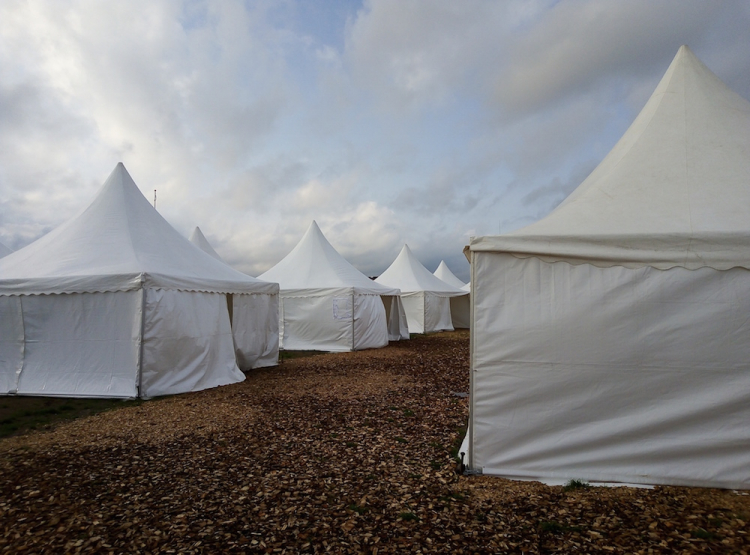
Closed tents at the end of the event
-
MAD is of course subject to criticism too. There were moments when one could sense a narcissistic self-celebration, worthy of the “oi polloi”, clashing with the message of equality that they aimed to spread. In the sequence of speeches (at a breath-taking rhythm) one could notice some excessively spectacularised moments which the Europeans usually enjoy less than the Americans. But these are small things and we can’t wait to be back next year. After all, we’re also curious to find out more about the Mad School, the big news announced at the very end.